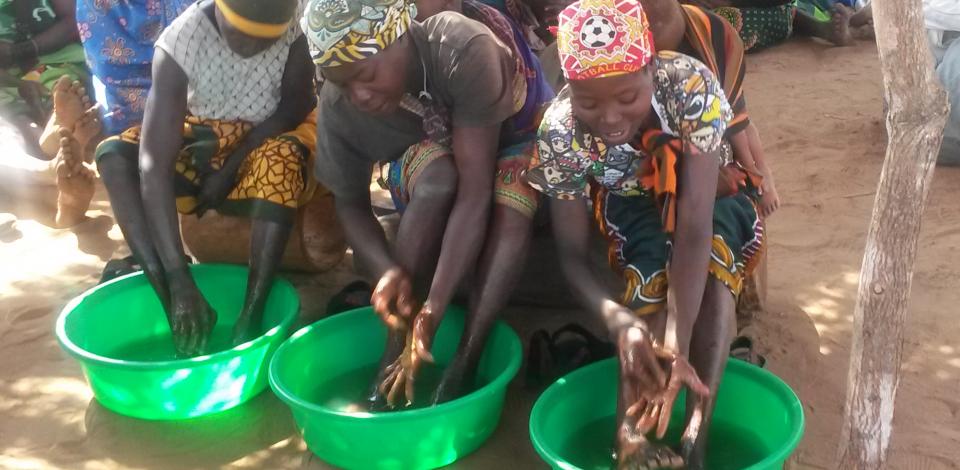
Introduction
Self-care practices occur in many forms. From washing the affected limb or foot with water to passive stretching hands and performing exercises.
Individuals with NTDs can benefit from good hygiene and self-care practices. Good skin hygiene of the affected limb or foot, with particular attention to skin lesions, is essential in decreasing the risk of wounds, opportunistic infections, further impairments and disease progression.
In all types of edema, early detection and action to reduce the swelling can prevent complications such as severely enlarged limbs and body parts, frequent infections and wounds that are difficult to heal. Edema-affected limbs are heavy, painful and difficult to move. This in return limits the daily activities and can restrict participation in family, school, work and the community. Moreover, it is problematic to find footwear and clothes that fit. If the edema does not improve, it may become permanent lymphedema. Lymphedema increases significantly the risk of bacterial infections that may even be life threatening. In lymphatic filariasis, lymphedema commonly affects the genital areas, especially the scrotum in men. This is called hydrocele, which requires surgical treatment if severe. Swelling of the external genitalia may also occur in women.
For which NTDs is this relevant?
Self-care is relevant for lymphatic filariasis, podoconiosis, leprosy, trachoma and buruli ulcer.
People with lymphedema, particularly affected by lymphatic filariasis or podoconiosis, require lifelong self-care to control swellings and infections. Without treatment, the condition deteriorates and may progress into elephantiasis when the skin becoming hard, thick, knobby and the limb or scrotum is severely enlarged. Early treatment and self-management prevent progression, also of the acute episodes. Health care workers should therefore teach and stimulate the affected person and their family to practice appropriate (daily) self-care routines.

 Infolep
Infolep